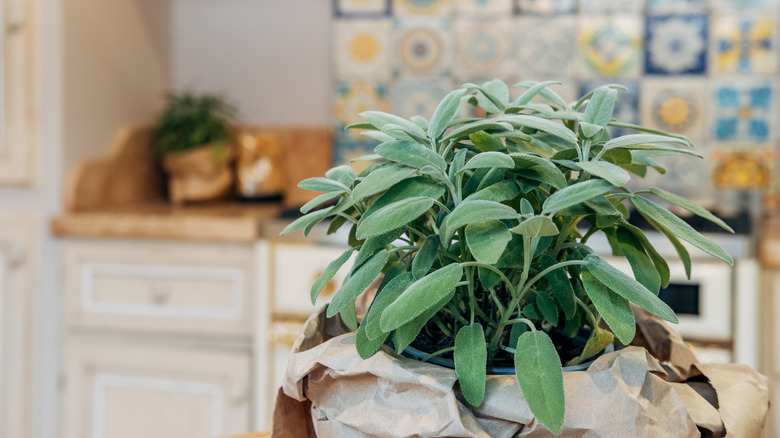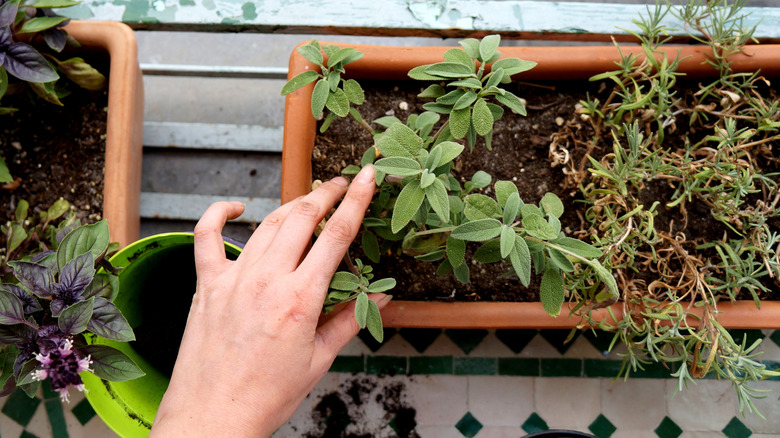Mistakes Everyone Makes When Growing Sage
For household cooks and professional chefs alike, the idea of cooking with herbs from your personal culinary garden is dreamy. Your own grocery store is right outside your kitchen, serving up the freshest ingredients. One of the easiest herbs to grow (which is on the list of five essential herbs Martha Stewart grows in her garden) is common sage (Salvia officinalis). It's incredibly hardy and is the cultivar of sage that is most commonly used for cooking. For gardeners with limited outdoor space, here's some good news: Growing it indoors also can be a breeze.
Despite its reputation as being easy to grow, gardeners tend to make common mistakes that lead to problems that need to be addressed in order to grow a healthy, happy plant. One of the biggest mistakes is overwatering, which can lead to a host of problems, like root rot, yellowing leaves, or limp stems. Sage thrives in well-drained soil and is drought tolerant, which means it can handle — and prefers — its soil to dry out between waterings. (While we're talking about soil, reducing the risk of overwatering includes using the best type of soil for growing herbs.) Water your sage deeply but less frequently, and even less during the inactive winter season. Another related mistake is splashing the leaves while watering the plants. If the soft, fuzzy leaves of the sage get overly wet, they become susceptible to disease and rot.
Avoid overfertilizing and letting your sage grow too wildly
Another common mistake when growing sage is overfertilizing, especially with a high-nitrogen fertilizer, which should not be used on this particular herb. Doing so could trigger an infestation of aphids on new growth in the spring, and the plant's inability to harden off later in the season, making it vulnerable to low winter temperatures. True to their low-maintenance reputation, sage plants actually don't need fertilizer, although a little won't hurt. In excess, fertilizer produces leggy plants and weak stems. A layer of compost and mulch in the spring or slow-release fertilizer with subsequent doses of organic or natural plant food, will provide sufficient nutrients.
While it's tempting to let a plant grow freely, sage plants benefit from a hard pruning, which will reward you with full growth and healthy new leaves. When gardeners make the mistake of ignoring their sage, the plant becomes wild and unattractive. Thinning it out, especially in the center, also encourages air flow through the branches. This is a good thing, considering how powdery mildew — a common threat to sage — thrives in damp environments. Get your pruning shears out in early spring when you see signs of growth, and cut off dead branches. If the bush is outgrowing its space, trim around the outer edges, as well as throughout the plant, to create the shape you desire. As always when pruning, cut the branch diagonally above a leaf node. Don't be afraid to make bold cuts — your sage will thank you!

